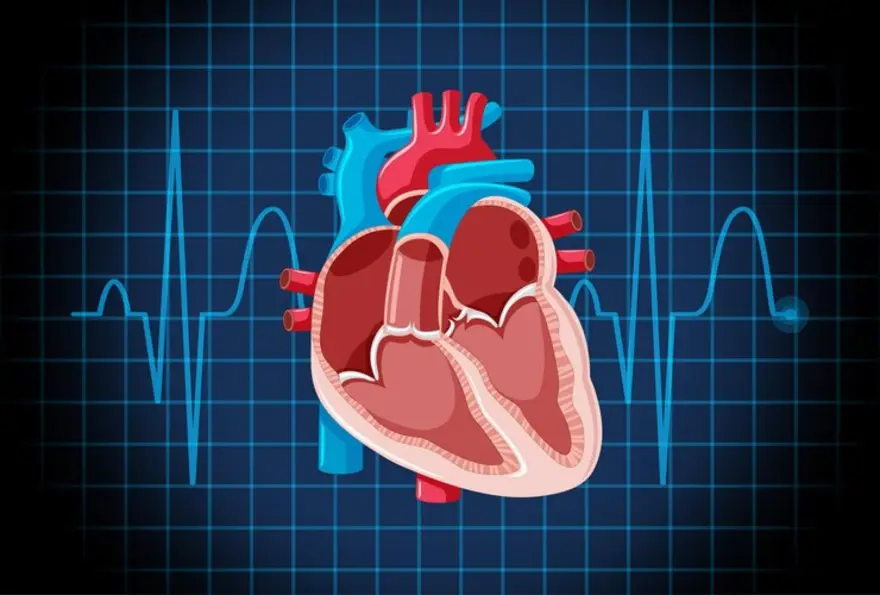Health Wellness
Water borne diseases and diagnosis
7799 Views
0

Are you worried about your health and the health of your loved ones? In developing countries like India, the threat of waterborne diseases is a concern that affects countless individuals. These diseases, such as cholera, typhoid, hepatitis A and dysentery, can strike swiftly and severely impact lives. Understanding the depth of this issue is the first step in safeguarding your well-being and that of your community.
In this article, we delve into the world of waterborne diseases, their widespread impact and the critical measures you can take to prevent them. It's time to ensure that clean, safe water is a reality for all and that the shadow of waterborne diseases no longer looms over our lives.
What are Waterborne Diseases?
Waterborne diseases are illnesses caused by microscopic organisms like bacteria, viruses and parasites present in water. These contaminants can enter water sources through various means, including sewage discharge, agricultural runoff, and poor sanitation. When individuals ingest or come into contact with this contaminated water, they can develop a range of illnesses. When people consume or come into contact with water contaminated by these pathogens, they can contract these diseases.
Common waterborne diseases list include cholera, typhoid, hepatitis A and dysentery. The water-borne diseases symptoms can range from mild gastrointestinal discomfort to severe illness and can even be life-threatening if left untreated.
How to protect yourself from waterborne diseases?
To protect yourself from waterborne diseases, follow these essential measures:
- Safe Water Sources: Consume water from treated and reliable sources like municipal supplies or bottled water.
- Purification: Boil water for at least one minute to kill pathogens, or use water purifiers and filters for safe drinking.
- Hand Hygiene: Frequent handwashing with soap and clean water, especially before eating and after using the toilet, is crucial.
- Safe Food Handling: Ensure food is properly cooked and avoid consuming raw or undercooked seafood.
- Avoid Ice and Raw Seafood: When dining out, skip ice in drinks and avoid raw or undercooked seafood.
- Vaccinations: Get vaccinated against waterborne diseases such as hepatitis A.
- Sanitation: Use clean and well-maintained toilets and dispose of waste safely to prevent contamination.
- Avoid Swimming in Polluted Water: Stay out of water bodies known to be contaminated.
Water-Borne Diseases and Their Impact
Water is essential for life, but when it becomes a carrier of disease-causing microorganisms, it can lead to waterborne bacterial diseases. These illnesses are a global public health concern, particularly in regions with limited access to clean water and proper sanitation facilities. In this comprehensive discussion, let's learn more about waterborne diseases, examining their impact on individuals, families, communities and societies at large.
Understanding Waterborne Diseases Causes And Prevention
Waterborne diseases, also known as water-related diseases, are a group of illnesses caused by the ingestion of water contaminated with pathogenic microorganisms. These microorganisms include bacteria, viruses and parasites. When individuals come into contact with or consume water infected with these pathogens, they can become infected, leading to various health issues.
Here is the most common waterborne diseases list:
- Cholera: Caused by the bacterium Vibrio cholerae, cholera is characterised by severe diarrhoea and dehydration. It can be life-threatening if not treated promptly.
- Typhoid Fever: Salmonella typhi bacteria cause typhoid fever, which presents with high fever, weakness and gastrointestinal symptoms.
- Hepatitis A: This viral infection targets the liver and results in jaundice, fatigue and abdominal discomfort.
- Dysentery: Amoebic dysentery, caused by Entamoeba histolytica, leads to bloody diarrhoea and abdominal pain.
- Giardiasis: Giardia lamblia is a parasite that causes giardiasis, resulting in diarrhoea, stomach cramps and weight loss.
- The Impact of Waterborne Diseases
- Waterborne diseases have a far-reaching impact on individuals, communities and societies. This impact encompasses several dimensions, including health, economic, social and environmental effects.
Health Impact of waterborne diseases
The health impact of waterborne diseases includes severe gastrointestinal symptoms, malnutrition and even mortality, posing a significant threat to affected individuals and communities.
- Morbidity: Waterborne diseases can result in high morbidity rates, especially in areas with limited access to clean water and sanitation. Individuals affected by these diseases often suffer from severe gastrointestinal symptoms, including diarrhoea, vomiting and dehydration.
- Mortality: In severe cases, waterborne diseases can lead to death, particularly among vulnerable populations such as young children, the elderly and those with weakened immune systems or with other illnesses.
- Chronic Health Issues: Even non-fatal cases of waterborne diseases can have long-term health consequences. For example, survivors of severe cholera may experience persistent gastrointestinal problems in future too.
- Nutritional Impact: Prolonged diarrhoea and vomiting can lead to malnutrition, especially in children, potentially affecting their growth and development.
- Psychological Impact: Suffering from waterborne diseases can cause psychological distress and anxiety, particularly for individuals who endure severe symptoms or witness the suffering of loved ones.
Economic Impact of Waterborne Diseases
Waterborne diseases result in significant economic burdens, including healthcare costs and productivity losses.
- Healthcare Costs: Treating waterborne diseases can strain healthcare systems and lead to increased medical expenses for individuals and governments. The treatment of severe illnesses can be costly.
- Productivity Loss: Sick individuals often cannot work or attend school, at least not effectively, leading to a loss of productivity in affected communities.
- Economic Burden: The economic burden of waterborne diseases extends to families who must bear the costs of medical treatment, lost wages and funeral expenses in cases of mortality.
Social Impact of waterborne diseases
Waterborne diseases disrupt communities, leading to education interruptions, loss of social life, social stigma and strained resources.
- Education Disruption: The prevalence of waterborne diseases can disrupt educational systems as sick children are unable to attend school. This can perpetuate cycles of poverty.
- Stigma and Discrimination: Individuals who are suffering or have suffered from waterborne diseases may face stigma and discrimination among peers, leading to social isolation.
- Community Strain: Communities dealing with frequent outbreaks of waterborne diseases may face strained resources, emotional stress and difficulty in providing proper care and sanitation.
Environmental Impact of waterborne diseases
Waterborne diseases can disrupt ecosystems and harm aquatic life, causing lasting environmental damage, such as:
- Ecosystem Pollution: Water sources contaminated by disease-causing microorganisms can harm ecosystems and aquatic life, disrupting the balance of local environments.
- Waste Disposal Issues: Improper waste disposal practices can lead to the contamination of water sources, exacerbating the problem.
Factors Contributing to Waterborne Diseases
Waterborne diseases are often a consequence of several interconnected factors:
1. Lack of Clean Water Sources: In many regions, access to clean and safe drinking water is limited, leading to the consumption of water from contaminated sources.
2. Inadequate Sanitation: Poor sanitation practices, including open defecation and improper waste disposal, contribute to water contamination.
- Overcrowding: In densely populated areas with limited access to sanitation facilities, the risk of waterborne disease outbreaks is higher.
- Climate and Environmental Factors: Climate-related events, such as flooding, can contaminate water sources with sewage and other pollutants.
- Lack of Hygiene Education: Insufficient awareness and education about proper hygiene practices can lead to behaviours that increase the risk of waterborne diseases.
Prevention and Mitigation of waterborne diseases
Preventing waterborne diseases is a complex but crucial endeavour. It involves using safe water sources, purifying water through methods like boiling or filtration, practising good hygiene and maintaining proper sanitation measures to avoid water contamination. These diseases are a significant public health concern, particularly in areas with inadequate access to clean water and sanitation facilities. Some key strategies and interventions on how to prevent waterborne diseases include:
- Access to Clean Water: Ensuring that communities have access to clean and safe drinking water sources is fundamental. This involves investments in water infrastructure and treatment facilities.
- Sanitation Improvement: Promoting proper sanitation practices, including the construction of toilets and waste management systems, can mitigate water contamination.
- Hygiene Prnomotion: Education and awareness campaigns on hygiene practices, such as handwashing, can reduce the risk of disease transmission.
- Vaccination: Vaccines are available for some waterborne diseases, such as hepatitis A. Widespread vaccination can reduce the incidence of these diseases.
- Early Detection and Treatment: Timely diagnosis and treatment of waterborne diseases are essential to prevent severe cases and fatalities.
- Climate Resilience: Building resilience to climate-related events, such as floods and droughts, can help prevent water contamination.
What are the effects of waterborne diseases?
The effects of waterborne diseases include symptoms such as diarrhoea, vomiting, stomach cramps and fever. In severe cases, these illnesses can lead to dehydration, malnutrition and, in extreme cases, death if not treated promptly.
What are the main causes of water-based diseases?
Waterborne diseases are primarily caused by the contamination of water sources with disease-causing microorganisms. Common causes of waterborne diseases include bacterial contamination (e.g., E. coli, Salmonella), viral contamination (e.g., hepatitis A) and parasitic contamination (e.g., Giardia, Cryptosporidium). Contamination of water can occur through sewage, faecal matter, or inadequate sanitation practices, leading to the proliferation of these pathogens in water sources.
How do diseases spread through water?
Diseases spread when water sources become contaminated with microorganisms like bacteria, viruses, or parasites. Contaminated water if ingested, leads to infections. Additionally, individuals can contract these diseases through activities like swimming in polluted water or consuming food that has been prepared or washed with contaminated water. Poor sanitation, inadequate sewage treatment and lack of clean drinking water contribute to waterborne bacterial diseases.
Conclusion
Waterborne diseases pose a significant health risk. Preventative measures, such as using safe water and practising good hygiene are crucial to safeguarding against waterborne diseases.
In your journey to safeguard your health, Metropolis Labs is your trusted partner. They specialise in accurate blood testing and health check-ups with at-home sample collection. Get your reports conveniently online through email and the Metropolis TruHealth app. Choose Metropolis Labs for reliable pathology services and take the first step toward a healthier life
 Home Visit
Home Visit Upload
Upload














1701259759.webp)









 WhatsApp
WhatsApp